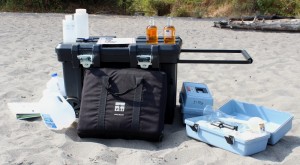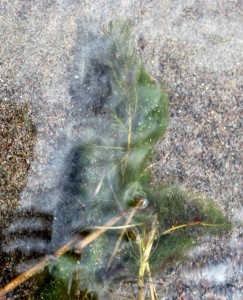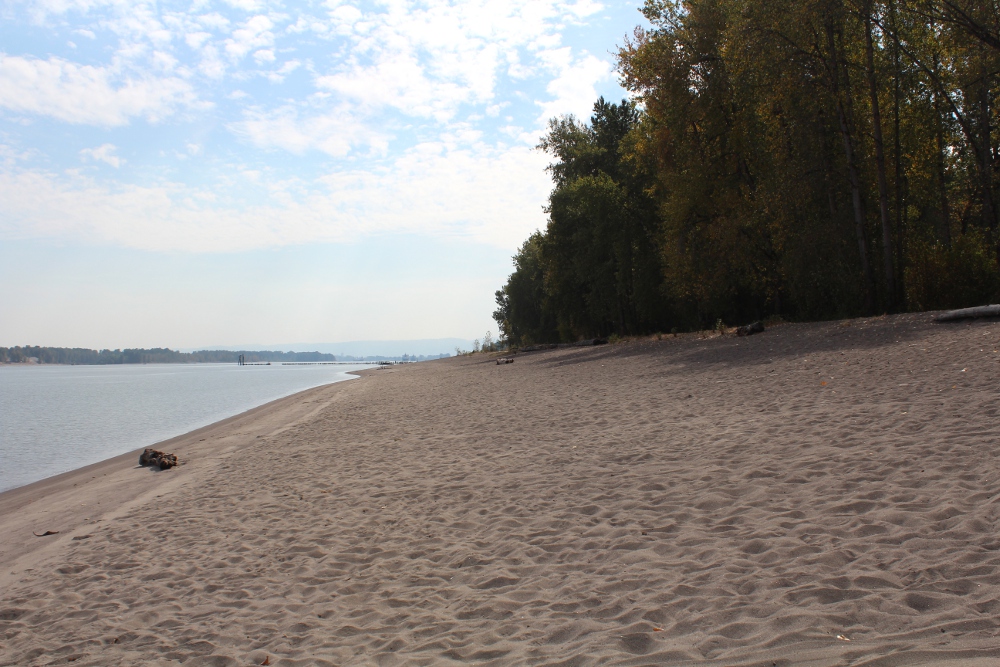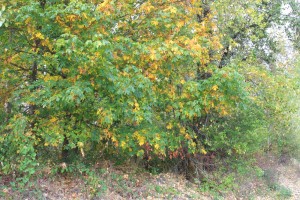Autumn is beginning to reacquaint itself with Oregon; the light doesn’t last so long as it did a month ago, and the evenings are beginning to cool. The water temperatures haven’t been as warm, and when I waded out into the Columbia River when I visited Sauvie Island earlier this week, my skin was rather less tolerant of the chill. Still, I was able to take the necessary samples and readings for my final water testing of the year for Columbia Riverkeeper. While I’ve been taking care of this beach since December 2012 for SOLVE, this is the first summer I was able to test the waters monthly, measuring temperature, pH, and dissolved oxygen, among others. These readings help to determine whether there have been any significant changes to the water quality, which can lead to an investigation of the source of the changes if need be.
 I do enjoy going out to test. I feel rather like a mad scientist, lugging a big chemistry set out onto the beach, pouring various substances into water samples that make them change color, carrying arcane instruments into the river itself. Sometimes people ask me what I’m doing, and it gives me a chance to do some outreach, but for the most part folks leave me to my devices–literally.
I do enjoy going out to test. I feel rather like a mad scientist, lugging a big chemistry set out onto the beach, pouring various substances into water samples that make them change color, carrying arcane instruments into the river itself. Sometimes people ask me what I’m doing, and it gives me a chance to do some outreach, but for the most part folks leave me to my devices–literally.
Since it’s September, it was also time for me to do a quarterly report on the fauna, flora, fungi and other natural features of this place. It’s still late summer, and there was quite a bit of activity–robins and song sparrows chipped in the underbrush and cottonwood trees, and yellowjackets, attracted by fermenting Himalayan blackberries, buzzed me with some interest. While the deer were safely tucked away further in the woods, their tracks crisscrossed the landscape.
 Because so much of my time was spent with the water testing, and I had to get the equipment back on time, I didn’t get to explore the landscape as much as I would have liked. But I still took note of a few plants I hadn’t had a chance to identify before; with a little help from Facebook, I could now label them as Bermuda grass, cat’s ear, and European watermilfoil (probably), all three invasives. They went up on my list with Himalayan blackberry and Russian thistle as evidence of how disturbed the ecology here is. Still, the cottonwood and broadleaf maples dominated the forest, and the osoberry and snowberry managed to hold their ground underneath.
Because so much of my time was spent with the water testing, and I had to get the equipment back on time, I didn’t get to explore the landscape as much as I would have liked. But I still took note of a few plants I hadn’t had a chance to identify before; with a little help from Facebook, I could now label them as Bermuda grass, cat’s ear, and European watermilfoil (probably), all three invasives. They went up on my list with Himalayan blackberry and Russian thistle as evidence of how disturbed the ecology here is. Still, the cottonwood and broadleaf maples dominated the forest, and the osoberry and snowberry managed to hold their ground underneath.
Next month when I visit again, I’ll have more time to simply sit with this place, maybe wander along the trails back in the woods, and pick up more of the detritus from a summer of people fishing, swimming and partying on the beach. And then, this December, I can celebrate two years of volunteering here. Maybe I’ll do something a little special for the occasion. We’ll see.


